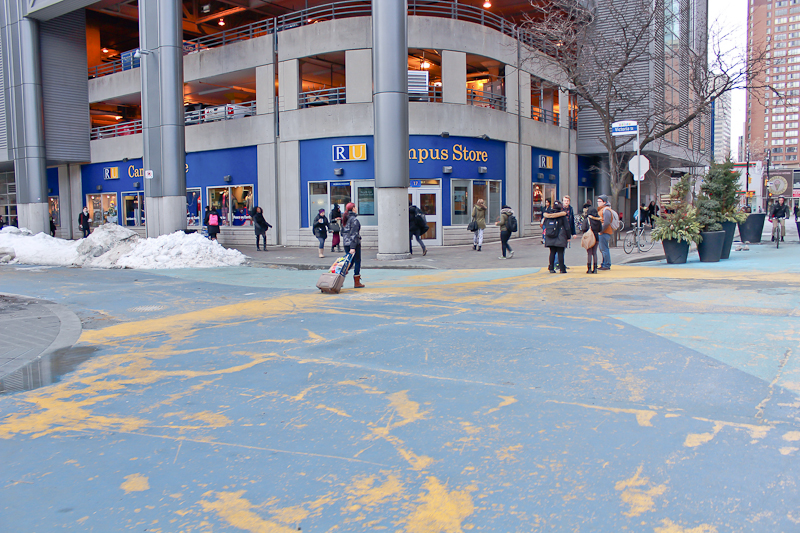Administrators at Ryerson University are apologizing after blue paint applied to roads on campus in September 2013 have begun peeling off.
Gould and Victoria streets, which run through the middle of Ryerson’s campus, were painted blue and gold in September as part of several campus beautification projects, according to Ryerson’s communications manager Michael Forbes.
The money for the project, which cost $170,000, came from a variety of sources.
“It came from multiple streams,” Forbes said. “So part of it came from the government, part of it came from fundraising, part of it came from alumni, and part of it came from the university’s operating budget.”
Forbes said about 60 per cent of Ryerson’s funding comes from the provincial government. Julia Hanigsberg, Ryerson’s vice-president (administration and finance), posted an explanation and apology on her personal blog.
“We did the work in a rush. We put speed ahead of quality of application. That was our first mistake,” she wrote on her blog Jan. 6. “We have assigned a new project manager to make sure quality control is achieved from start to finish including removal of the current product and new surface preparation to achieve a durable result.”
The paint used, known as epoxy, is a thick, resinous paint also used to colour the roads in New York City and other parts of Toronto. Forbes said the university is still determining why the paint didn’t work as expected.
“We had done some testing that showed the epoxy would work, but unfortunately, for whatever reason the paints did not adhere, they did not bond, so we don’t know whether it was a matter of treating the asphalt, or the combination of paints, but sadly it didn’t work,” he said.
Roshelle Lawrence, vice-president (education) of the Ryerson Students’ Union, said the group had no involvement in the process, financial or otherwise.
“We were not involved in it at all. We showed up one day to work and they painted the road,” Lawrence said.
Forbes said a more permanent solution is in the works, which will be paid for by the university.
“Right now we are trying to figure out what our options are,” he said. “Obviously we can’t fix this during the winter and during the cold, so the decision before us is do we look at an interim solution, or, do we look at a longer-term permanent solution . . . such as installing permanent paving stones.”






